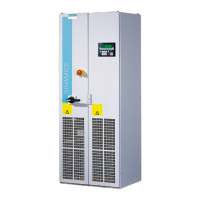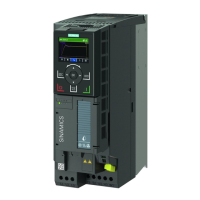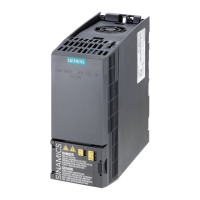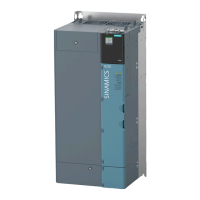Functions, monitoring, and protective functions
9.4 Monitoring and protective functions
Converter cabinet units
588 Operating Instructions, 07/2016, A5E03347396A
Selecting the sensor types
● p4100[0...11] sets the sensor type for the respective temperature channel.
● r4105[0...11] indicates the actual value of the temperature channel.
For switching temperature sensors, such as e.g. PTC and bimetallic NC contact,
symbolically two limit values are displayed:
– r4105[0...11] = -50 °C: The actual temperature value is below the rated response
temperature.
– r4105[0...11] = +250 °C: The actual temperature value is above the rated response
temperature.
Note
PTC and bimetallic NC contact
What is shown in r4105[0...11] does not correspond to the actual temperature value.
Table 9- 13 Selecting the sensor types
Temperature display range r4105[0...11]
Measuring the cable resistances
When using 2-wire sensors (1x2, 2x2 wire systems), to increase the measuring accuracy,
the cable resistance can be measured and saved.
Procedure for determining the cable resistance:
1. Select the measuring method (1x2/2x2) for the corresponding terminal block (p4108[0...5]
= 0, 1).
2. Set the required sensor type for the relevant channel (p4100[x] = 1 ... 6, x = 0...5 or
0...11).
3. Bypass/jumper the sensor to be connected (short-circuit the sensor cable close to the
sensor).
4. Connect the sensor cables to the relevant terminals 1(+), 2(-) or 3(+), 4(-).
5. For the corresponding channel, start measurement of the cable resistance (p4109[x] = 1).
6. After p4109[x] = 0, check the measured resistance value in p4110[x].
7. Remove the jumper across the temperature sensor.

